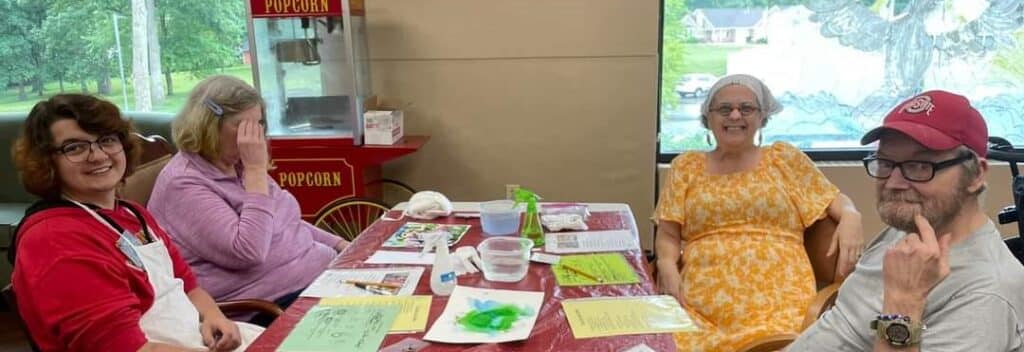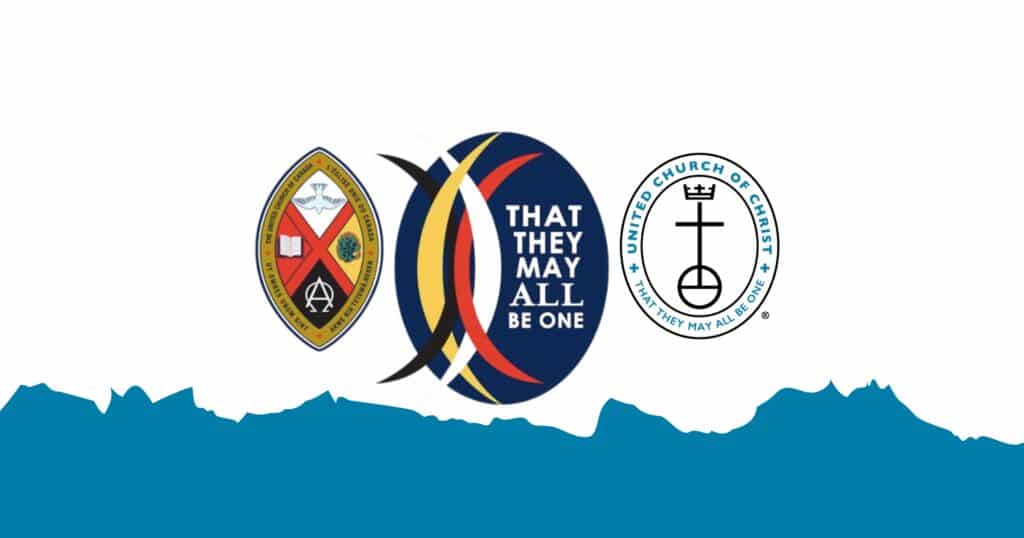Art program helps those with dementia create beauty while opening minds and hearts
An intergenerational art program called “Opening Minds Through Art” (OMA) is offering people living with dementia a way to assume new roles as artists and leave a legacy of beautiful artwork. This program is thriving at the United Church Homes Chapel Hill Community in Canal Fulton, Ohio.
It was developed at Scripps Gerontology Center, an Ohio Center of Excellence at Miami University in 2007. People living with dementia (artists) are paired with volunteers (students, families, caregivers) who are trained to rely on imagination instead of memory, focusing on remaining strengths rather than lost skills.
A society that values all
The goal of the program is to build a society that values all people, including older adults living with dementia. This is achieved through building friendships between the volunteers in the program with those participating as they engage in making art together.
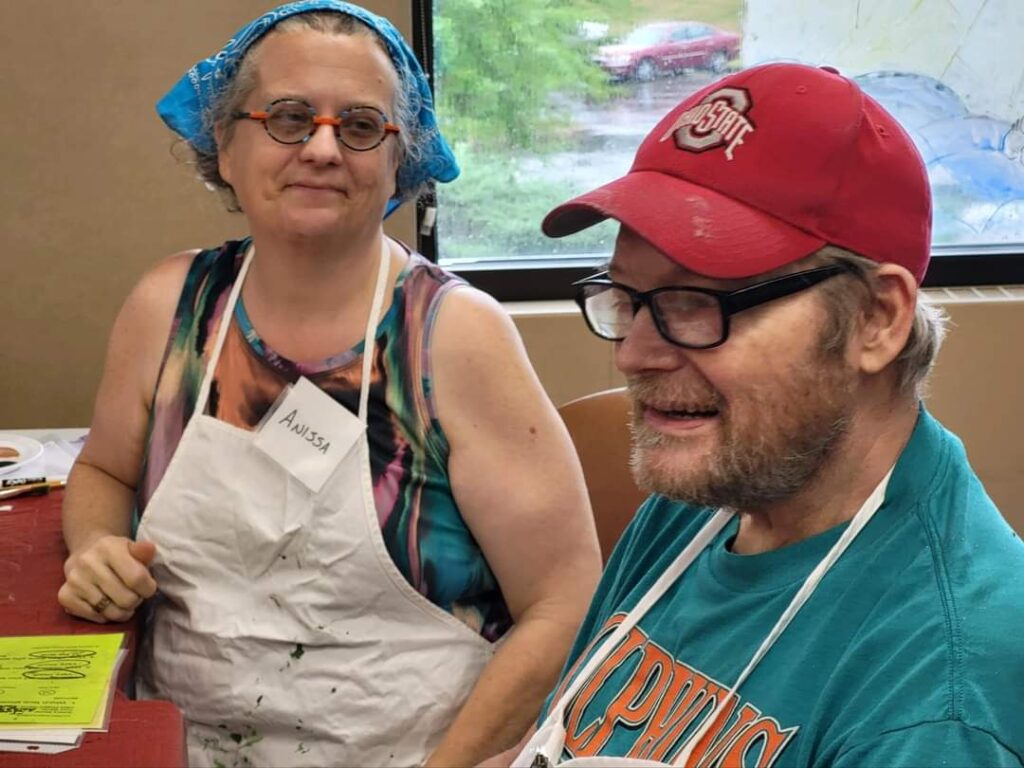
The Rev. Anissa Glaser-Bacon is one such volunteer. Glaser-Bacon has a number of roles at the United Church of Christ, including serving as Minister for Ministers in Specialized Settings and Professional Endorsement Coordinator and as part of the UCC Ministerial Excellence, Support & Authorization team (MESA). She’s also pastor of the New Vision UCC in Canton, Ohio. It was through her wife, Tracy Glaser-Bacon, who serves as a chaplain at the Chapel Hill Community, that she became involved in the Opening Minds Through Art program.
Widening vision
Glaser-Bacon said this experience has widened her vision of what older people, and even those in various stages of dementia, can do.
“My church congregation is generally younger. My experience with older people is more limited. But participating in this program has given me personal knowledge of how older people can relate and expand their abilities,” she said.
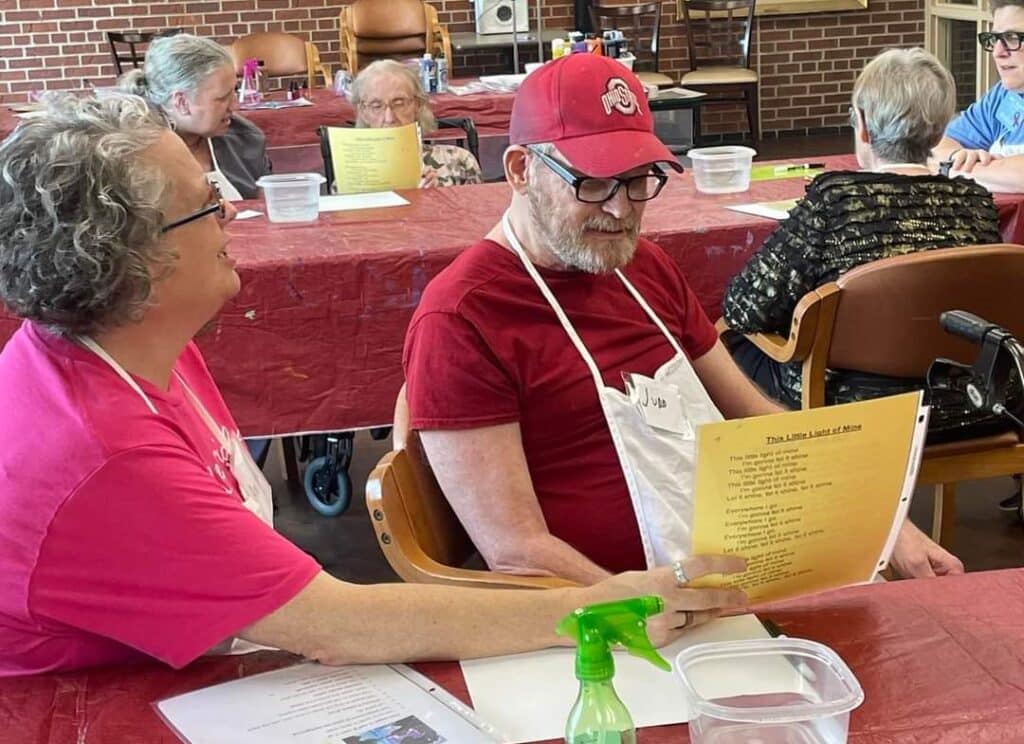
Glaser-Bacon’s partner in the most recent session of the program was a “70-something-year-old” man named Judd who is the early stages of dementia. She said she was surprised to find that Judd’s taste in music was more like her own than her parents’. Judd loves rock and roll and the two found many artists they enjoy in common, such as AC/DC and Lynyrd Skynrd.
“Judd and I have learned a lot about each other through this process,” said Glaser-Bacon.
Each OMA program is four-weeks long, and volunteers are partnered with the same person for each session during that time. There is a leader who teaches the volunteers the specific project they will be working on each week. Then that volunteer helps guide their assigned resident through the project. They are allowed choices in colors and mediums as they work through each masterpiece.
Emphasizing agency
“The program emphasizes agency in their artistic creations,” Glaser-Bacon explained. “It’s their creation and every project has an option. Tools are simple. We use all kinds of textures, acrylics, ink, yarn and even glitter.”
She said Judd is a minimalist in his creations, and he likes watching others do their art. The “artists” are also asked to name their piece upon completion.
Published studies have documented OMA’s positive impact on both sides. Compared to other activities, people living with dementia show more expressions of pleasure, greater engagement and better overall well-being while participating in OMA.
Volunteers, too, walk away with the same benefits, showing increased positive attitudes toward people living with dementia, as well as increased comfort levels in interacting with older people with memory issues.
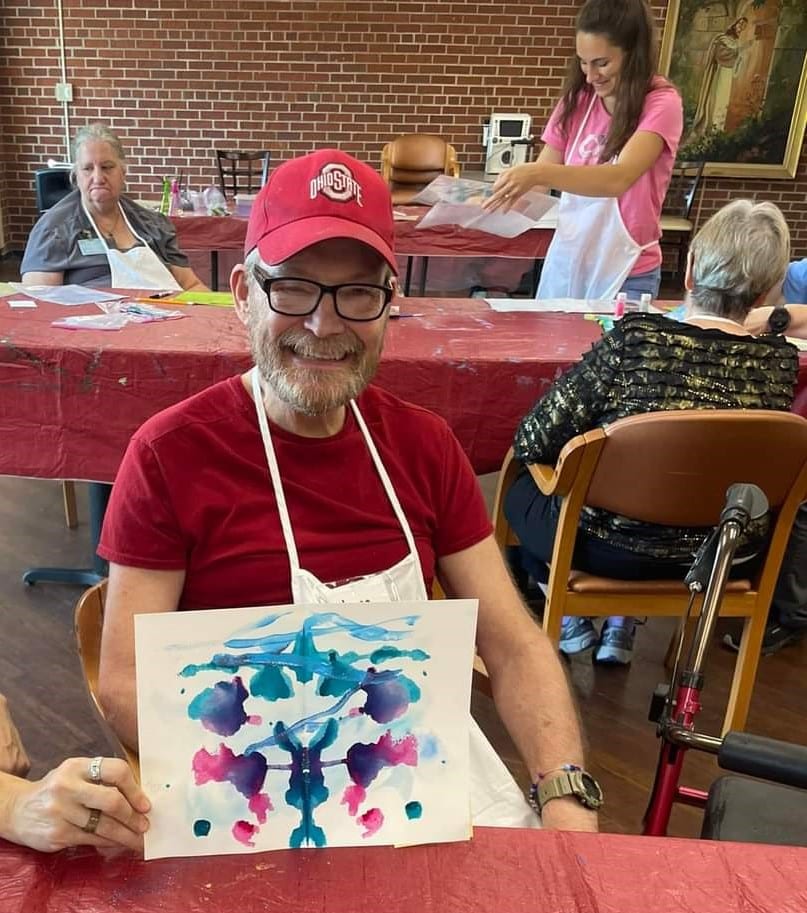
“Judd saw someone jousting in one of the artist’s creations, and he began singing ‘Camelot’ when he noticed it,” Glaser-Bacon recalled. “That is the fun of the projects — it unlocks memories. That’s part of the goal.”
Content on ucc.org is copyrighted by the National Setting of the United Church of Christ and may be only shared according to the guidelines outlined here.
Related News
Who’s Next?
This week the Supreme Court agreed to oral arguments on the challenges to Presidential...
Read MoreGender and Sexuality Justice Ministries joins global movement to end violence against women, children
The Gender and Sexuality Justice Ministries (GSJM) of the United Church of Christ has joined...
Read MoreUCC and United Church of Canada celebrate a decade of ‘shared mission, mutual accountability, common hope in Christ’
Ten years ago, the United Church of Christ (UCC) and The United Church of Canada (UCCan)...
Read More